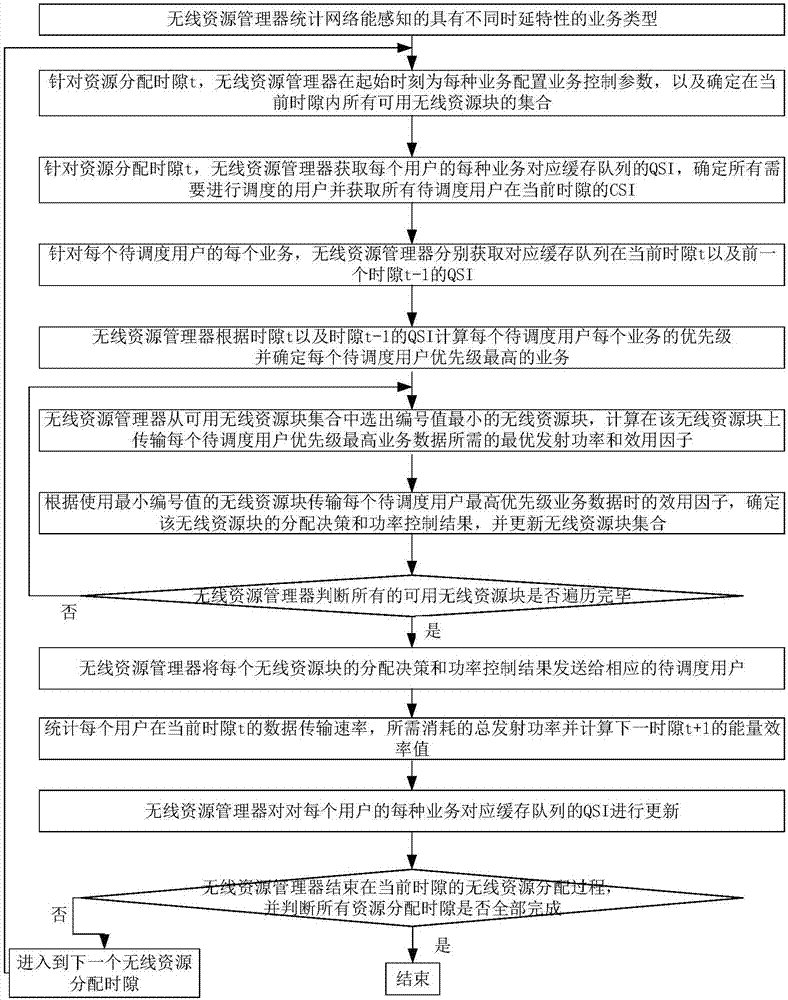Resource allocation method for time-delay optimization
A resource allocation and delay technology, applied in network traffic/resource management, electrical components, wireless communication, etc., can solve problems such as lack of high energy efficiency performance, high complexity of related algorithms, and inability to guarantee network stability
- Summary
- Abstract
- Description
- Claims
- Application Information
AI Technical Summary
Problems solved by technology
Method used
Image
Examples
Embodiment Construction
[0064] In order to make the purpose, design scheme and advantages of the present invention clearer, the present invention will be further described in detail below in conjunction with the accompanying drawings and embodiments.
[0065] A schematic diagram of an embodiment of the delay-optimized resource allocation method in the present invention, as shown in figure 1 As shown, when the radio resource manager executes the user scheduling and service priority determination process, the radio resource manager first obtains the QSI of each service corresponding to each service of each user from the baseband processor buffer area, and determines all the QSIs in the current time slot Uplink users that need to be scheduled, and then obtain the CSI reported by all users to be scheduled in the current time slot through the uplink control channel;
[0066] The wireless resource manager obtains the QSI of each service corresponding to each service of each user to be scheduled from the bu...
PUM
 Login to View More
Login to View More Abstract
Description
Claims
Application Information
 Login to View More
Login to View More - R&D
- Intellectual Property
- Life Sciences
- Materials
- Tech Scout
- Unparalleled Data Quality
- Higher Quality Content
- 60% Fewer Hallucinations
Browse by: Latest US Patents, China's latest patents, Technical Efficacy Thesaurus, Application Domain, Technology Topic, Popular Technical Reports.
© 2025 PatSnap. All rights reserved.Legal|Privacy policy|Modern Slavery Act Transparency Statement|Sitemap|About US| Contact US: help@patsnap.com



